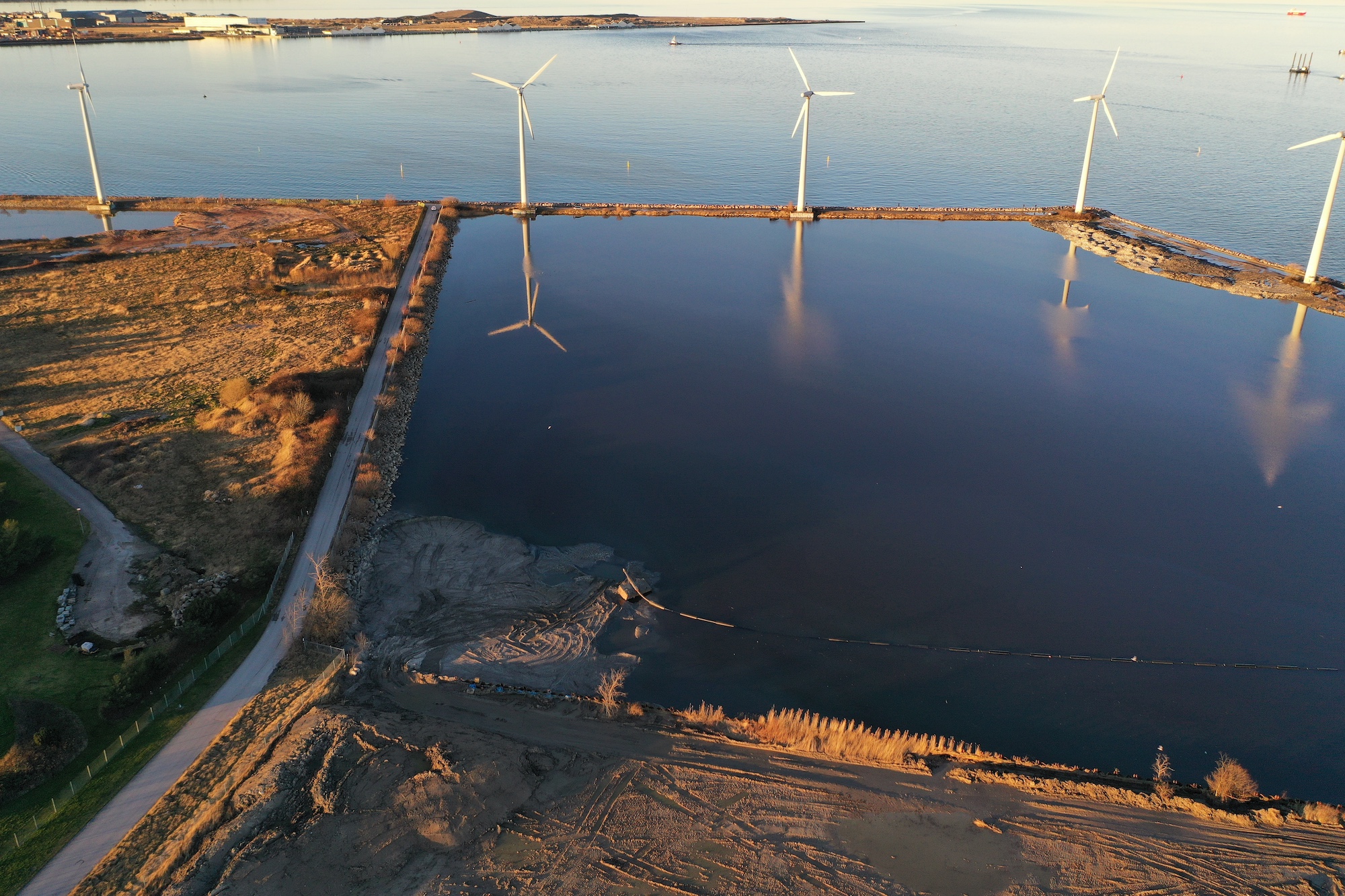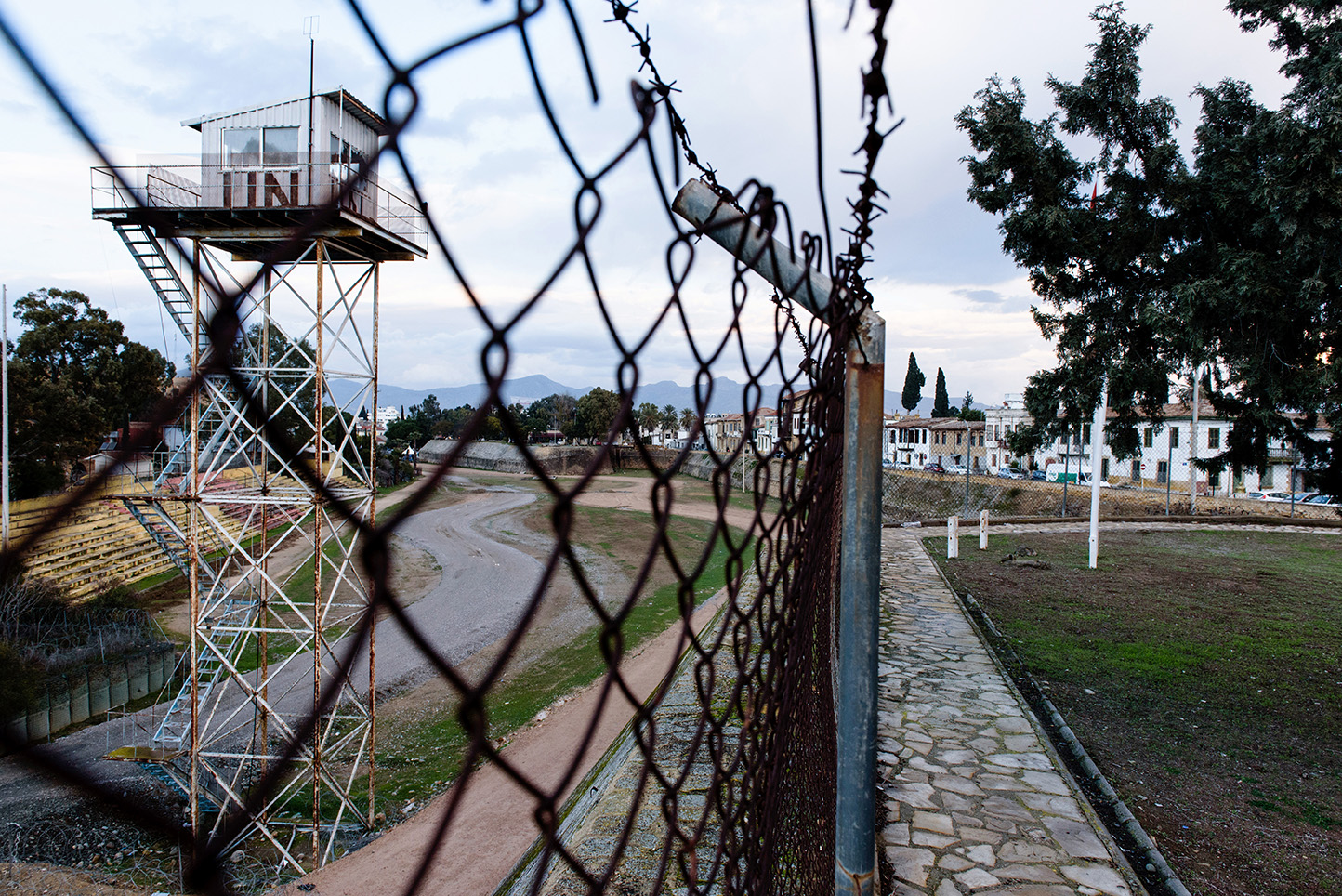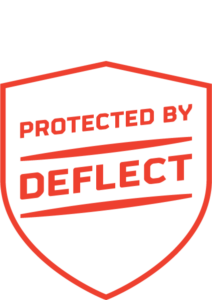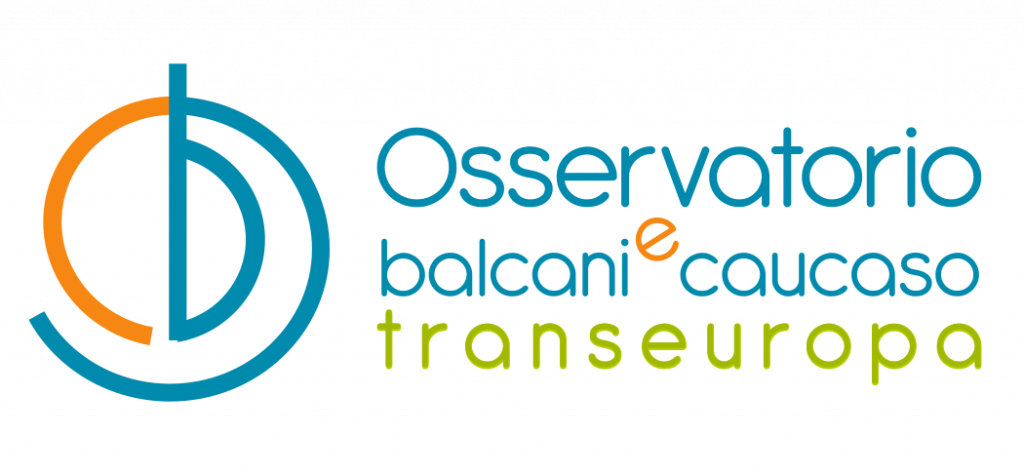Toxic secret lurks beneath the waters
Constance, Gdańsk, Klaipėda, Ejsberg. These are some of the European coastal cities that are undergoing major expansion of their port facilities, in the face of serious environmental damage

Toxic-secret-lurks-beneath-the-waters
An old dumping in Denmark, which stopped after political pressure. © Jan Henningsen
In the shadow of port expansions summing up to billions of euros across the European Union, a silent environmental disaster is unfolding beneath the waves. In the last days of 2024, the port of the Romanian city of Constanta launched a tender for the awarding of a major dredging project, for a total value of 93 million euros, half of which financed by EU coffers. The project will extend over an area of 250 hectares. However, few have raised the question of where the mountain of excavated sediment would ultimately end up.
This project is part of a broader context of ambitious EU-backed port expansions, aimed at transforming the European coasts: Terminal T3 in Gdansk, with its recently completed 717-meter quay; Lithuanian port of Klaipėda which undergoes a modernization worth a total of 308 million Euros, and the port of Ejsberg in Denmark, whose capacity has been increased slso thanks to EU funding worth 32.1 million euros.
Each of these projects requires intensive dredging, that is, the extraction of seafloor sediments, which has become an invisible foundation for the expansion of European ports.
Behind these investments, touted by European officials as catalysts for economic prosperity and sustainable development, lies a far more complex reality.
The dredged material – often saturated with contaminants – cannot just disappear. Regulatory loopholes allow companies to dump toxic mix directly back into the Baltic and Black Seas or in port landfills and terminals themselves.
What’s even more concerning, the situation is now bound to worsen. EU member states have passed exemptions that weaken the Water Framework Directive – the Union’s cornerstone legislation for protecting coastal water quality after several rounds of negotiations. The provisionally agreed-upon revisions legalise short-term degradation of the water quality, enabling dredging practices and the broader dumping of contaminated sediments at sea.
With minimal NGO oversight and little scientific scrutiny focused specifically on dredging and dumping impacts, one of Europe’s most widespread forms of marine pollution continues to deepen – quite literally – out of the public eye.
The toxic legacy beneath our ports
Port sediments are toxic time capsules, accumulating pollutants for generations and creating what marine scientists today identify as dangerous hotspots along continental coastlines.
“We are finding heavy metals and organic pollutants, including agricultural pesticides”, explains Dr. Agnieszka Jędruch, a marine environmental chemist specialising in sediment contamination and its biological effects at the Polish Institute of Oceanology.
The contamination picture is constantly expanding. “Nowadays, we have new types of pollutants, which are used for the development of new technologies, for example, solar batteries and electric cars”, points out Jędruch. “So, a not-very-nice cocktail of different types of pollutants”.
By deploying dredging equipment to deepen harbors and fairlanes, port authorities are reopening toxic chapters of industrial history. These mechanical excavations disturb layers of sediment that have effectively sequestered harmful substances for decades. This “cocktail” is then discharged into a non-contaminated water area, called dumping sites.
The stakes could not be higher. “These contaminants do not simply vanish once disturbed”, says Jędruch. “There is sometimes a hundred years of contamination history in the sediments. Therefore, when a layer is disturbed, a huge amount of pollutants re-enter the water”.
Jędruch’s conclusion is clear. “We should disturb these sediments as little as possible and absolutely prevent their widespread dispersal into marine ecosystems”.
Yet Europe’s approach to managing this growing threat remains fragmented. The 2008 EU Environmental Quality Standards Directive sets binding limits designed to keep harmful substances below dangerous levels. However, there is a critical point: the limits are mandatory for water bodies, but voluntary for sediments. As a result, there is no harmonised EU-wide policy for contaminant levels in dredged material.
Therefore, member states are free to establish their own national thresholds for how much contamination is acceptable in sediments before they can be dumped at sea and on land. These standards vary widely across countries – both in terms of which substances are measured and how strict the limits are. To make matters worse, many national sediment thresholds were set more than a decade ago and remain frozen despite scientific advances. Romania’s standards date back to 2006, Denmark’s to 2008 and Poland’s to 2015.
The resulting disparities are striking. Only Denmark and Lithuania have threshold values for TBT, the hormone-disrupting chemical once widely used in ship paints before being forbidden, despite it being widespread in European waters. Romania and Poland set no such limits in their water legislation. For PCB – another synthetic contaminant – standards vary widely, with Romania and Lithuania applying much stricter thresholds than Denmark and Poland.
This regulatory fragmentation leaves environmental groups frustrated. While many NGOs at the EU and national levels, including Greenpeace Romania and Poland as well as Mare Foundation, do not focus on sediment contamination, those that do are ringing alarm bells.
Codruța Savu, a policy officer at WWF Europe, explains that current assessments across the EU still rely heavily on monitoring a narrow range of familiar pollutants – primarily heavy metals and PAHs. “These are important, but they do not reflect the growing body of evidence around newer, bioactive substances now flagged by science”, points out Savu.
The exemplification of ports toxicity is also present in the Port of Gdańsk, where dredging work recently uncovered material contaminated with hydrocarbons, nickel and copper at levels exceeding the national standards set by national water legislation, making it unsuitable for return to the sea. Similar practices, where material exceeding standards is being dumped in landfills, can be observed in in Lithuania and Denmark.
“There used to be shipbuilding areas near the dredging site”, explains Łukasz Jabłonowski, head of the Hydrotechnical Unit at the Port of Gdańsk. “Copper was probably an ingredient for ship painting. It was deposited there for decades and accumulated. Now it has been detected, and another way must be found to remove or dispose of the contaminated dredged material”.
Currently, the port authorities in Gdańsk plan to retest the dredged samples, hoping that contamination levels might prove lower than initially measured, allowing some material to be taken to the dumping site in the sea.
Disposing of contaminated dredged material on land is expensive. In Poland, Jabłonowski estimates the disposal of one cubic metre of contaminated sediment starts from 250 euros – depending on the amount and type of contamination – compared to 50-70 Euros per m³ for dumping dredged material that complies with national standards in designated areas in the sea, as Jabłonowski confirmed based on port’s current contract.
The impact of dumping at sea
Regardless of contamination levels, the scientific consensus is clear: dumping at sea should never occur.
The impact of dumping at sea on marine life is devastating, explains Florin Timofte, Managing Director of Romania’s National Institute for Marine Research and Development.
“Contaminants enter the food chain – from the smallest organisms to the largest”. This includes everything from bacteria to marine mammals and humans, stresses Timofte. “That is why we strongly oppose dumping metals or contaminated sediments into the sea”.
Aleksandra Zgrudno from the University of Gdańsk has spent years studying ecosystem recovery in the Gulf of Gdańsk. In June 2023, she witnessed the aftermath of sediment dumping during beach expansion work connected to the Port of Gdynia approach fairway.
She compares dumping at sea to “an avalanche, but slower”, as the sediment shifts deeper into the sea.
During her dives, Zgrudno observed alarming changes: “I could not see filter feeders or clams, just dead shells. All the small filter-feeding crustaceans that once thrived here in large numbers have disappeared. Fish populations also declined dramatically. There are considerably fewer fish than before. There used to be many small species like sticklebacks, but now only a few survive”.
Losing these habitats is a blow that Zgrudno considers “unrecoverable.”
The environmental effects are also felt firsthand by those who depend on the sea for their livelihood. Martin Fønsskov, a Danish coastal fisherman with 45 years of experience in the Øresund Strait, recounts the disruption caused by dumping.
“Last time there was dumping, I had to sail farther away from where I usually fish. That cost me fuel and hurt my business”, explains Fønsskov. “I cannot fish in my regular spots during dumping events because a dark, slimy silt settles in the nets, and the fish avoid them”.
However, the impact of dumping may take decades to fully reveal itself, as these processes take time, says Vassilios S. Tselentis, professor in Marine Environment at the University of Piraeus.
Dredging continues
Despite mounting evidence of environmental harm, dredging and port expansion continue to accelerate across Europe, driven by economic and security priorities that make the practice nearly impossible to halt.
The reality is straightforward: modern maritime commerce demands deeper ports. “Maritime port development goes hand in hand with economic development”, explains Luis C. Blancas, a senior expert in transport and logistics at the World Bank. Dredging ensures port navigability, allowing vessels of all sizes to access harbours while supporting international trade, job creation and national competitiveness.
Lithuania’s only seaport highlights the need for expansion. Despite contributing over 6% to the national GDP, the port’s depth is limited to 16 meters, below the 17-meter market standard .
“Without expanding it, we are currently losing the opportunity to fully load vessels with a greater draft, which are increasingly dominating the global shipping market”, says Algis Latakas, General Director of the Klaipėda State Seaport Authority.
Ports are also key for energy security. After cutting off Russian natural gas supplies following the 2022 invasion of Ukraine, Lithuania now relies entirely on its massive LNG terminal “Independence”, which also serves Estonia and Latvia.
Poland followed a similar path, with its Świnoujście LNG terminal, opened in January 2025, allowing the country to diversify away from Russian pipeline gas.
The military dimension adds another layer of complexity. “The Port of Klaipėda is of critical importance in ensuring military mobility”, says Darius Antanaitis, a military expert and retired major of the Lithuanian Armed Forces.
Modern military strategies depend on ports’ ability to facilitate rapid deployment of troops and equipment. These capabilities require maintained depths through dredging operations.
Dumping dredged material elsewhere?
Dredging is thus necessary for the economy and military, but dumping dredged material at sea causes severe environmental harm, and some European ports are starting to recognise this.
In Denmark, some major ports are beginning to move away from dumping the dredged material at sea. In Middelfart Municipality, the city council in 2024 decided to voluntarily revoke a newly approved dumping permit for the marina in odrder to “protect the marine environment in the Nature Park Little Belt”, explains the local politician, Jacob Bjørnskov Nielsen, who is also Chair of the Climate, Nature and Recycling Committee.
They are putting on hold dredging operations for now, but have reserved funding for investing and searching for alternative solutions, as soon as they will need to dredge again. “We sre willing to pay more to find alternative solutions”, says Bjørnskov Nielsen.
But the fundamental question remains: what to do with contaminated dredged material if not dumping them at sea?
The most obvious answer – storing the material in designated sites on land – presents significant challenges.
At Romania’s Port of Constanța, for example, dredged sediments are used in the construction of various port infrastructure without any decontamination. The dredged material is mixed with cement and other binders to form massive concrete blocks.
Anna Noren, a researcher at Chalmers University of Technology in Sweden, who has worked on a similar project at Gothenburg Port, acknowledges some concerns with this method. Regarding her project, “there was an initial small release of TBT, which decreased over time, suggesting that pollutants may be partly locked into the cement mixture and could undergo some degradation”.
Such leakage could occur with other contaminants as well. “While some compounds may naturally degrade, metals will persist indefinitely – warns Niren – and we do noy know how these materials will behave over the next 10,000 years”.
More importantly, this approach only uses a small fraction of the contaminated dredged material, raising questions about the fate of the rest if it were disposed of on land. “My contact at the port told me that the volume we processed came from just two dredging operations”, explains Noren. “So what will we do with the remaining material in the future? We cannot keep expanding port terminals indefinitely, and this material is not suitable for housing construction”.
Beyond separation, Noren is now also exploring ways to recover valuable resources from dredged sediments. “Some of the metals we find in sediments, like copper, are actually valuable”.
Noren’s team is studying methods like sediment washing, where chemicals are used to extract metals from the sediments. But she warns that recovery is rarely simple. “Even if metal levels look high, they might be tightly bound to the sediment and not actually harmful, nor easy to remove. Sometimes, trying to ‘fix’ the problem can make it worse”.
Dirtier rules
Despite its significant environmental impact, until recently, dumping of dredged material at sea and on land remained largely unregulated at the EU level.
Oversight relied mostly on the Water Framework Directive (WFD) and the Marine Strategy Framework Directive – neither of which specifically sets legal boundaries for dredging and dumping at sea. The WFD, EU’s key law for water protection at the coastline, requires all surface waters – rivers, lakes and coastlines – to reach “good status” by 2027.
There was no dedicated EU laws addressing them directly.
Until this year, when negotiations began, for the first time, to address the dumping of dredged material at sea directly in EU law, not as activities to be restricted, but as exemptions to environmental protections: one allowing temporary deterioration of water quality, and the other permitting sediment relocation, provided there is no “net increase” in pollution.
In September 2025, after several rounds of negotiations, these EU institutions reached a provisional agreement approving these exemptions. These measures directly challenge one of the key principles at the heart of the WFD: the non-deterioration principle, meaning no activity should worsen the status of a water body.
A Europarlamentarian, Per Clausen, representing The Left in the negotiations, says "It is an agreement we are entering into with gritted teeth".
While the European Parliament and Commission advocated stricter rules, Member States in the Council pushed for more flexibility. The Council’s proposals aimed to allow short-term degradation to water bodies and legalise “sediment relocation”, if there is no "net increase" in pollution.
These recently approved exemptions effectively give dumping operators a regulatory green light.
The proposed changes stemmed from a document from the Netherlands, Germany, Denmark, Finland and Luxembourg. They argued that activities like dumping dredge material “that only relocate already existing pollution” would not breach the WFD. Since harmful PBT substances—persistent, bioaccumulative, and toxic—already exceed legal limits in many areas, the directive blocks activities that don’t add to the overall pollution load, they further argue.
But according to Søren Laurentius Nielsen, chief biologist at Copenhagen’s Ocean Institute, that argument doesn’t hold, “since dredging will enhance the mobility of harmful substances in the sediment, and some substances may undergo chemical reactions when dumped, making them more harmful to humans and animals.”
The provisional agreement must now be formally endorsed by both the European Council and the European Parliament. Once adopted, Member States will have until December 2027 to transpose the updated directive into national law.
By allowing the exemptions to pass, the EU has effectively opened the door for more dredging activity, without stronger safeguards. The risk? A rise in pollution, masked by technicalities. For those concerned about Europe’s marine environments, the real battle may just be beginning.
This investigation is in conjunction with Delfi.lt, Noir and Ingeniøren, and is funded by CIJI .
Tag: CIJI
Toxic secret lurks beneath the waters
Constance, Gdańsk, Klaipėda, Ejsberg. These are some of the European coastal cities that are undergoing major expansion of their port facilities, in the face of serious environmental damage

Toxic-secret-lurks-beneath-the-waters
An old dumping in Denmark, which stopped after political pressure. © Jan Henningsen
In the shadow of port expansions summing up to billions of euros across the European Union, a silent environmental disaster is unfolding beneath the waves. In the last days of 2024, the port of the Romanian city of Constanta launched a tender for the awarding of a major dredging project, for a total value of 93 million euros, half of which financed by EU coffers. The project will extend over an area of 250 hectares. However, few have raised the question of where the mountain of excavated sediment would ultimately end up.
This project is part of a broader context of ambitious EU-backed port expansions, aimed at transforming the European coasts: Terminal T3 in Gdansk, with its recently completed 717-meter quay; Lithuanian port of Klaipėda which undergoes a modernization worth a total of 308 million Euros, and the port of Ejsberg in Denmark, whose capacity has been increased slso thanks to EU funding worth 32.1 million euros.
Each of these projects requires intensive dredging, that is, the extraction of seafloor sediments, which has become an invisible foundation for the expansion of European ports.
Behind these investments, touted by European officials as catalysts for economic prosperity and sustainable development, lies a far more complex reality.
The dredged material – often saturated with contaminants – cannot just disappear. Regulatory loopholes allow companies to dump toxic mix directly back into the Baltic and Black Seas or in port landfills and terminals themselves.
What’s even more concerning, the situation is now bound to worsen. EU member states have passed exemptions that weaken the Water Framework Directive – the Union’s cornerstone legislation for protecting coastal water quality after several rounds of negotiations. The provisionally agreed-upon revisions legalise short-term degradation of the water quality, enabling dredging practices and the broader dumping of contaminated sediments at sea.
With minimal NGO oversight and little scientific scrutiny focused specifically on dredging and dumping impacts, one of Europe’s most widespread forms of marine pollution continues to deepen – quite literally – out of the public eye.
The toxic legacy beneath our ports
Port sediments are toxic time capsules, accumulating pollutants for generations and creating what marine scientists today identify as dangerous hotspots along continental coastlines.
“We are finding heavy metals and organic pollutants, including agricultural pesticides”, explains Dr. Agnieszka Jędruch, a marine environmental chemist specialising in sediment contamination and its biological effects at the Polish Institute of Oceanology.
The contamination picture is constantly expanding. “Nowadays, we have new types of pollutants, which are used for the development of new technologies, for example, solar batteries and electric cars”, points out Jędruch. “So, a not-very-nice cocktail of different types of pollutants”.
By deploying dredging equipment to deepen harbors and fairlanes, port authorities are reopening toxic chapters of industrial history. These mechanical excavations disturb layers of sediment that have effectively sequestered harmful substances for decades. This “cocktail” is then discharged into a non-contaminated water area, called dumping sites.
The stakes could not be higher. “These contaminants do not simply vanish once disturbed”, says Jędruch. “There is sometimes a hundred years of contamination history in the sediments. Therefore, when a layer is disturbed, a huge amount of pollutants re-enter the water”.
Jędruch’s conclusion is clear. “We should disturb these sediments as little as possible and absolutely prevent their widespread dispersal into marine ecosystems”.
Yet Europe’s approach to managing this growing threat remains fragmented. The 2008 EU Environmental Quality Standards Directive sets binding limits designed to keep harmful substances below dangerous levels. However, there is a critical point: the limits are mandatory for water bodies, but voluntary for sediments. As a result, there is no harmonised EU-wide policy for contaminant levels in dredged material.
Therefore, member states are free to establish their own national thresholds for how much contamination is acceptable in sediments before they can be dumped at sea and on land. These standards vary widely across countries – both in terms of which substances are measured and how strict the limits are. To make matters worse, many national sediment thresholds were set more than a decade ago and remain frozen despite scientific advances. Romania’s standards date back to 2006, Denmark’s to 2008 and Poland’s to 2015.
The resulting disparities are striking. Only Denmark and Lithuania have threshold values for TBT, the hormone-disrupting chemical once widely used in ship paints before being forbidden, despite it being widespread in European waters. Romania and Poland set no such limits in their water legislation. For PCB – another synthetic contaminant – standards vary widely, with Romania and Lithuania applying much stricter thresholds than Denmark and Poland.
This regulatory fragmentation leaves environmental groups frustrated. While many NGOs at the EU and national levels, including Greenpeace Romania and Poland as well as Mare Foundation, do not focus on sediment contamination, those that do are ringing alarm bells.
Codruța Savu, a policy officer at WWF Europe, explains that current assessments across the EU still rely heavily on monitoring a narrow range of familiar pollutants – primarily heavy metals and PAHs. “These are important, but they do not reflect the growing body of evidence around newer, bioactive substances now flagged by science”, points out Savu.
The exemplification of ports toxicity is also present in the Port of Gdańsk, where dredging work recently uncovered material contaminated with hydrocarbons, nickel and copper at levels exceeding the national standards set by national water legislation, making it unsuitable for return to the sea. Similar practices, where material exceeding standards is being dumped in landfills, can be observed in in Lithuania and Denmark.
“There used to be shipbuilding areas near the dredging site”, explains Łukasz Jabłonowski, head of the Hydrotechnical Unit at the Port of Gdańsk. “Copper was probably an ingredient for ship painting. It was deposited there for decades and accumulated. Now it has been detected, and another way must be found to remove or dispose of the contaminated dredged material”.
Currently, the port authorities in Gdańsk plan to retest the dredged samples, hoping that contamination levels might prove lower than initially measured, allowing some material to be taken to the dumping site in the sea.
Disposing of contaminated dredged material on land is expensive. In Poland, Jabłonowski estimates the disposal of one cubic metre of contaminated sediment starts from 250 euros – depending on the amount and type of contamination – compared to 50-70 Euros per m³ for dumping dredged material that complies with national standards in designated areas in the sea, as Jabłonowski confirmed based on port’s current contract.
The impact of dumping at sea
Regardless of contamination levels, the scientific consensus is clear: dumping at sea should never occur.
The impact of dumping at sea on marine life is devastating, explains Florin Timofte, Managing Director of Romania’s National Institute for Marine Research and Development.
“Contaminants enter the food chain – from the smallest organisms to the largest”. This includes everything from bacteria to marine mammals and humans, stresses Timofte. “That is why we strongly oppose dumping metals or contaminated sediments into the sea”.
Aleksandra Zgrudno from the University of Gdańsk has spent years studying ecosystem recovery in the Gulf of Gdańsk. In June 2023, she witnessed the aftermath of sediment dumping during beach expansion work connected to the Port of Gdynia approach fairway.
She compares dumping at sea to “an avalanche, but slower”, as the sediment shifts deeper into the sea.
During her dives, Zgrudno observed alarming changes: “I could not see filter feeders or clams, just dead shells. All the small filter-feeding crustaceans that once thrived here in large numbers have disappeared. Fish populations also declined dramatically. There are considerably fewer fish than before. There used to be many small species like sticklebacks, but now only a few survive”.
Losing these habitats is a blow that Zgrudno considers “unrecoverable.”
The environmental effects are also felt firsthand by those who depend on the sea for their livelihood. Martin Fønsskov, a Danish coastal fisherman with 45 years of experience in the Øresund Strait, recounts the disruption caused by dumping.
“Last time there was dumping, I had to sail farther away from where I usually fish. That cost me fuel and hurt my business”, explains Fønsskov. “I cannot fish in my regular spots during dumping events because a dark, slimy silt settles in the nets, and the fish avoid them”.
However, the impact of dumping may take decades to fully reveal itself, as these processes take time, says Vassilios S. Tselentis, professor in Marine Environment at the University of Piraeus.
Dredging continues
Despite mounting evidence of environmental harm, dredging and port expansion continue to accelerate across Europe, driven by economic and security priorities that make the practice nearly impossible to halt.
The reality is straightforward: modern maritime commerce demands deeper ports. “Maritime port development goes hand in hand with economic development”, explains Luis C. Blancas, a senior expert in transport and logistics at the World Bank. Dredging ensures port navigability, allowing vessels of all sizes to access harbours while supporting international trade, job creation and national competitiveness.
Lithuania’s only seaport highlights the need for expansion. Despite contributing over 6% to the national GDP, the port’s depth is limited to 16 meters, below the 17-meter market standard .
“Without expanding it, we are currently losing the opportunity to fully load vessels with a greater draft, which are increasingly dominating the global shipping market”, says Algis Latakas, General Director of the Klaipėda State Seaport Authority.
Ports are also key for energy security. After cutting off Russian natural gas supplies following the 2022 invasion of Ukraine, Lithuania now relies entirely on its massive LNG terminal “Independence”, which also serves Estonia and Latvia.
Poland followed a similar path, with its Świnoujście LNG terminal, opened in January 2025, allowing the country to diversify away from Russian pipeline gas.
The military dimension adds another layer of complexity. “The Port of Klaipėda is of critical importance in ensuring military mobility”, says Darius Antanaitis, a military expert and retired major of the Lithuanian Armed Forces.
Modern military strategies depend on ports’ ability to facilitate rapid deployment of troops and equipment. These capabilities require maintained depths through dredging operations.
Dumping dredged material elsewhere?
Dredging is thus necessary for the economy and military, but dumping dredged material at sea causes severe environmental harm, and some European ports are starting to recognise this.
In Denmark, some major ports are beginning to move away from dumping the dredged material at sea. In Middelfart Municipality, the city council in 2024 decided to voluntarily revoke a newly approved dumping permit for the marina in odrder to “protect the marine environment in the Nature Park Little Belt”, explains the local politician, Jacob Bjørnskov Nielsen, who is also Chair of the Climate, Nature and Recycling Committee.
They are putting on hold dredging operations for now, but have reserved funding for investing and searching for alternative solutions, as soon as they will need to dredge again. “We sre willing to pay more to find alternative solutions”, says Bjørnskov Nielsen.
But the fundamental question remains: what to do with contaminated dredged material if not dumping them at sea?
The most obvious answer – storing the material in designated sites on land – presents significant challenges.
At Romania’s Port of Constanța, for example, dredged sediments are used in the construction of various port infrastructure without any decontamination. The dredged material is mixed with cement and other binders to form massive concrete blocks.
Anna Noren, a researcher at Chalmers University of Technology in Sweden, who has worked on a similar project at Gothenburg Port, acknowledges some concerns with this method. Regarding her project, “there was an initial small release of TBT, which decreased over time, suggesting that pollutants may be partly locked into the cement mixture and could undergo some degradation”.
Such leakage could occur with other contaminants as well. “While some compounds may naturally degrade, metals will persist indefinitely – warns Niren – and we do noy know how these materials will behave over the next 10,000 years”.
More importantly, this approach only uses a small fraction of the contaminated dredged material, raising questions about the fate of the rest if it were disposed of on land. “My contact at the port told me that the volume we processed came from just two dredging operations”, explains Noren. “So what will we do with the remaining material in the future? We cannot keep expanding port terminals indefinitely, and this material is not suitable for housing construction”.
Beyond separation, Noren is now also exploring ways to recover valuable resources from dredged sediments. “Some of the metals we find in sediments, like copper, are actually valuable”.
Noren’s team is studying methods like sediment washing, where chemicals are used to extract metals from the sediments. But she warns that recovery is rarely simple. “Even if metal levels look high, they might be tightly bound to the sediment and not actually harmful, nor easy to remove. Sometimes, trying to ‘fix’ the problem can make it worse”.
Dirtier rules
Despite its significant environmental impact, until recently, dumping of dredged material at sea and on land remained largely unregulated at the EU level.
Oversight relied mostly on the Water Framework Directive (WFD) and the Marine Strategy Framework Directive – neither of which specifically sets legal boundaries for dredging and dumping at sea. The WFD, EU’s key law for water protection at the coastline, requires all surface waters – rivers, lakes and coastlines – to reach “good status” by 2027.
There was no dedicated EU laws addressing them directly.
Until this year, when negotiations began, for the first time, to address the dumping of dredged material at sea directly in EU law, not as activities to be restricted, but as exemptions to environmental protections: one allowing temporary deterioration of water quality, and the other permitting sediment relocation, provided there is no “net increase” in pollution.
In September 2025, after several rounds of negotiations, these EU institutions reached a provisional agreement approving these exemptions. These measures directly challenge one of the key principles at the heart of the WFD: the non-deterioration principle, meaning no activity should worsen the status of a water body.
A Europarlamentarian, Per Clausen, representing The Left in the negotiations, says "It is an agreement we are entering into with gritted teeth".
While the European Parliament and Commission advocated stricter rules, Member States in the Council pushed for more flexibility. The Council’s proposals aimed to allow short-term degradation to water bodies and legalise “sediment relocation”, if there is no "net increase" in pollution.
These recently approved exemptions effectively give dumping operators a regulatory green light.
The proposed changes stemmed from a document from the Netherlands, Germany, Denmark, Finland and Luxembourg. They argued that activities like dumping dredge material “that only relocate already existing pollution” would not breach the WFD. Since harmful PBT substances—persistent, bioaccumulative, and toxic—already exceed legal limits in many areas, the directive blocks activities that don’t add to the overall pollution load, they further argue.
But according to Søren Laurentius Nielsen, chief biologist at Copenhagen’s Ocean Institute, that argument doesn’t hold, “since dredging will enhance the mobility of harmful substances in the sediment, and some substances may undergo chemical reactions when dumped, making them more harmful to humans and animals.”
The provisional agreement must now be formally endorsed by both the European Council and the European Parliament. Once adopted, Member States will have until December 2027 to transpose the updated directive into national law.
By allowing the exemptions to pass, the EU has effectively opened the door for more dredging activity, without stronger safeguards. The risk? A rise in pollution, masked by technicalities. For those concerned about Europe’s marine environments, the real battle may just be beginning.
This investigation is in conjunction with Delfi.lt, Noir and Ingeniøren, and is funded by CIJI .
Tag: CIJI















